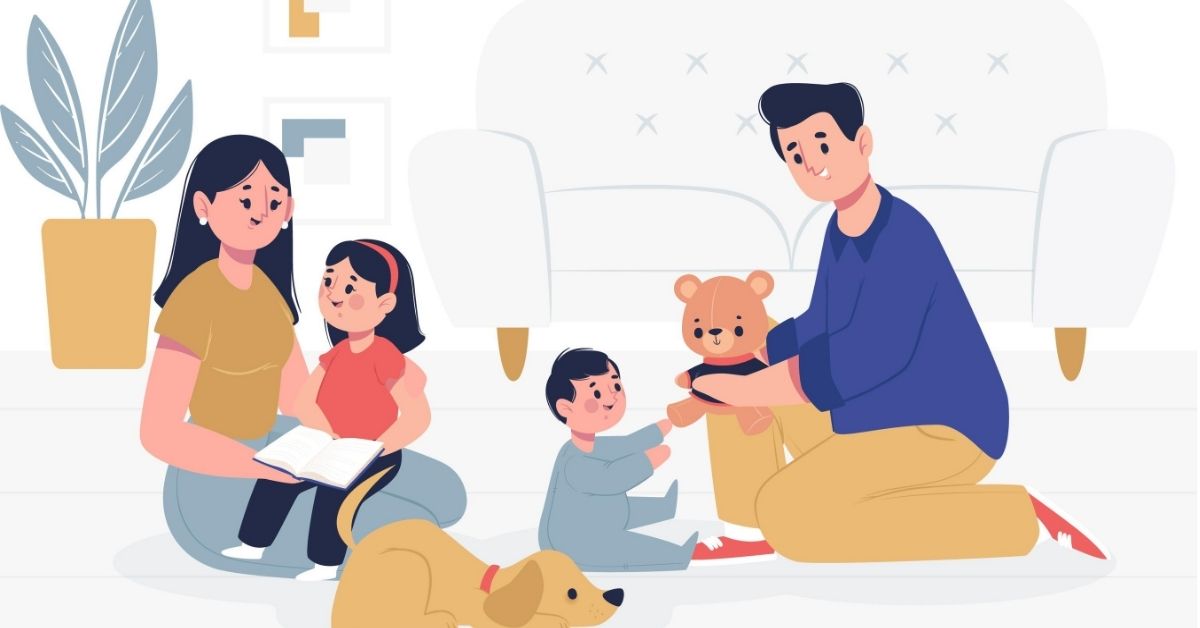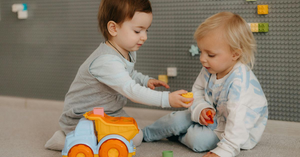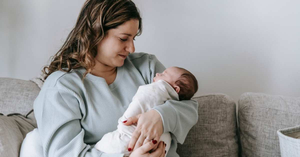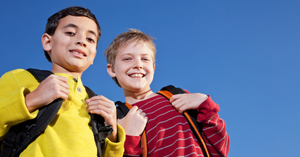“Being present,” has become one of those catchphrases thrown around that we know is positive and important, but we aren’t sure why. Nor are we exactly sure why teaching our kids mindful exercises benefits them?
When we practice focusing our attention on our breath, our body, or whichever cue we choose to practice with, we are strengthening our ability to not be distracted. In other words, to be present. When our kids experience stress, fear, anxiety, their natural “fight or flight” response kicks in. Practicing mindfulness strengthens our kids’ resilience to “feel” those emotions, without judgement, instead of distracting themselves with a snack or a screen.
Before setting up a mindful practice, it’s helpful to understand how “being present” and practicing these exercises produce the benefits experts claim they do. You can also read about 5 Simple and Mindful Exercises for Kids.
Being Present and Mindfulness for Kids – Why Practicing them is so important for children
Negative Emotions
Our natural instinct is to protect our kids from the dangers of the world. But there’s a difference between making sure children are wearing their seat belt in the car and providing our kids the tools to get through life’s hardships, such as a best friend hurting their feelings. As we adults know, getting our feelings hurt is part of life. Positive feelings, negative feelings, blah feelings are as natural and unavoidable as breathing. Practicing mindfulness empowers our kids to experience their emotions, feel their feelings, without turning away or critically judging themselves. Experts call this raising an ‘emotionally intelligent’ child.
Neural Pathways
When we practice mindfulness, we are literally strengthening the neural pathways in the brain that support how well we can focus and utilize our self-control. When our thoughts are scattered, when we are feeling upset and we can’t get out of it, or when we are lost in thought—all of these are examples of what Buddhists like to call, “monkey mind.” When we pull our focus back to the breath, back to a sound we are listening to, or back to feeling a specific part of the body, for example, we are strengthening, in that very moment, the neural pathways associated with providing many of the benefits listed below.
Practicing Mindfulness
Now that we have a basic idea of how mindfulness and meditation create the conditions to be present with our emotions, the benefits will make so much more sense. Also keep in mind, the research and data surrounding these benefits is solid:
- Stronger self-control
- Lower anxiety and stress
- Improved decision making
- Better ability to self-regulate emotions
- Higher self-esteem
- Improved social and communication skills
The science of mindfulness and meditation, and how the practice literally trains our mind to not run away and be distracted, is fascinating. I invite you to do more research for yourself.
We All Have 15 Minutes
A recent study demonstrated in adults that 15 minutes of mindfulness meditation improved their decision-making process. Just 15 minutes! And here’s what’s great about kids: the impact of mindfulness practice is even stronger because our kids’ brains are still developing.
Mindful Kids, Mindful Parents
Remember the good news? 15 minutes a day and you will begin experiencing some of the benefits of mindful practice yourself. You don’t have to be a Zen Master or a Behavioral Scientist to use any of these and the countless other mindful exercises available. Here are four general, doable guidelines to help you get started:
- Start your own mindful practice. We all have 15 minutes a day. Find an app that fits your needs and personality.
- Choose a few exercises that you and your kid find fun. Fun is the best motivator. My kid will do a mindful walk most any time I ask.
- Take it slow. If narrating the body scan is awkward at first, that’s ok. Try again or look for a YouTube video that holds your kid’s attention.
- And don’t force it. Training the mind takes time and if we are mixing mindfulness training with anxiety, we’re doing something wrong!
I have learned that I’m a better parent when I’m regularly practicing mindfulness. I meditate for 10 minutes in the morning, and then usually, throughout the day, I’ll sneak a couple more 5 to 10 minute meditations between activities. If you are engaged in your own mindful or meditation practice, that experience will make it that much easier teaching your own kid how to be mindful.
Next Steps
I have more good news. There are a wide variety of free and affordable mindful and meditation resources geared for adults and kids. Apps across platforms, books, podcasts, YouTube videos and websites are just a few examples. I look forward to sharing more information through my blog on these resources. In the meantime, please feel free to share any mindful exercises or kid-centered meditation practices and resources in the comments below.








Be the first one to comment on this story.